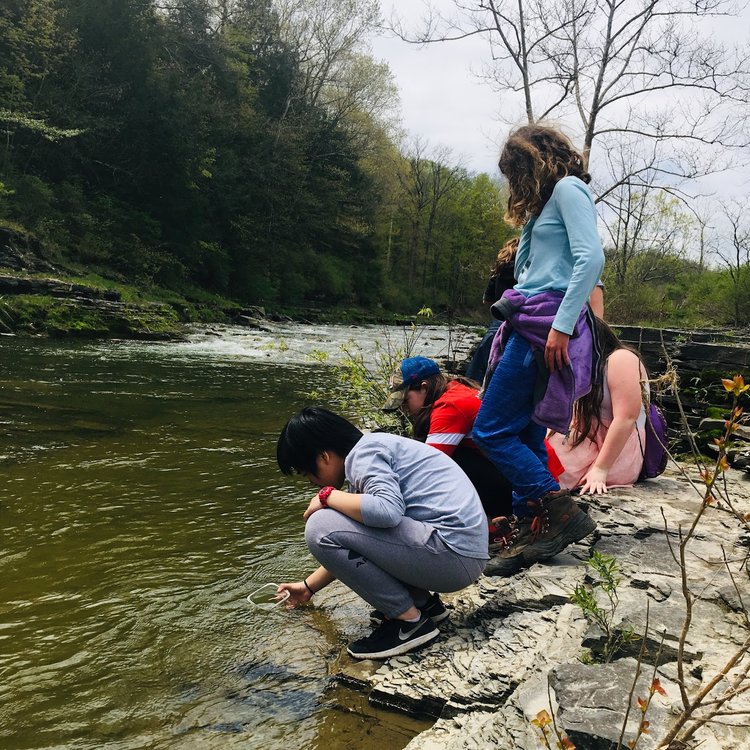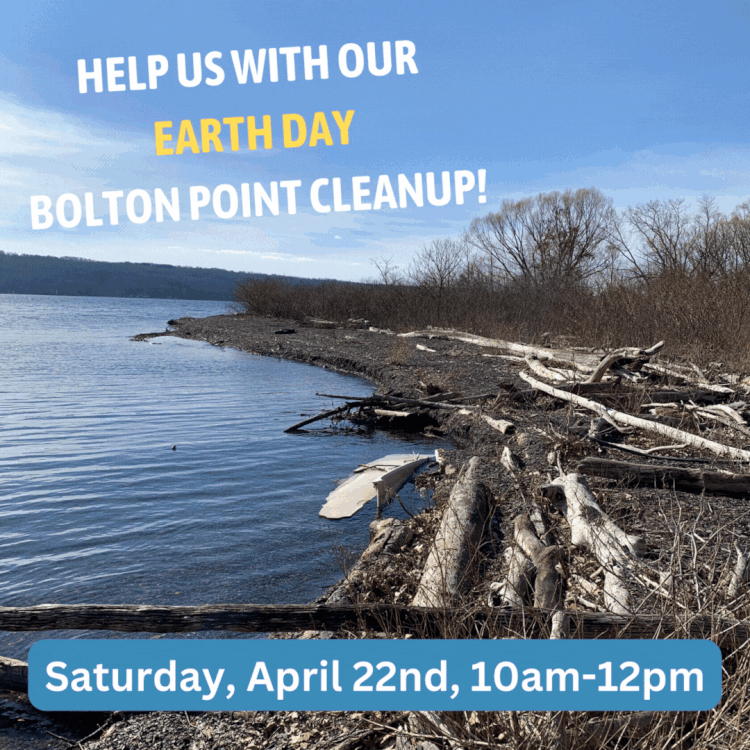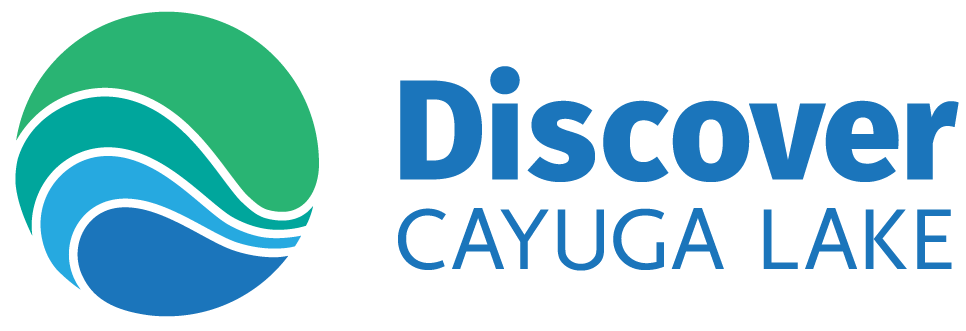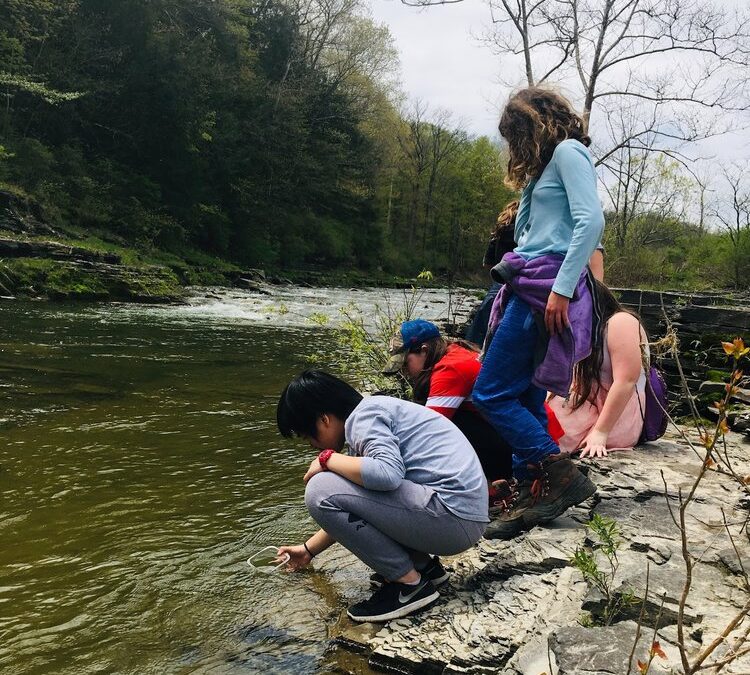
In these macro-invertebrate lessons, students sift through containers of freshly gathered stream water containing decomposing leaves, sticks, mud and … critters! As they do so, they identify the important aquatic insects, flies and worms which serve to indicate the health of the streams in which they’ll soon be releasing their trout.

The ceremonial moment of the trout’s release.

Students observe and consider stream health.
In late April and early May, DCL will be taking classes all around the Cayuga Lake Watershed on field trips to release the trout they’ve been raising all year in their classroom aquariums. Students will examine the insects within the stream before releasing their fingerling-size trout in order to ensure the water health is suitable for their trout’s survival.
While stream quality assessment through the lens of macro-invertebrates has been a cyclical part of the Trout in the Classroom curriculum, DCL has partnered with the Cayuga Lake Watershed Network this past winter to incorporate an additional Pollution Prevention Program to the spring classroom education. In this two-part program, students recognize that the care for the trout the’’ve raised does not end once the trout are released into the streams. They recognize that there are everyday pollution prevention actions they can take to promote watershed protection and ensure their trout have healthy, non-polluted habitats.

Too much trash in our waterways!

Paddlen-n-More Campers pick up trash in the water
Trash of any kind is destructive to waterways, causing problems of entanglement and ingestion for aquatic animals and adding toxic chemicals, depending on the source of litter. Plastics are of particular concern, as they break down into tiny microplastics that are difficult to remove and can be harmful to plants and animals essential to water’s health. Rain, run-off, storm drains, wind, and illegal dumping are ways that trash can find it’s way from the land to a nearby stream, and eventually the water source we all share, Cayuga Lake.
Our pilot Pollution Prevention Program enables participating classes to conduct school pollution surveys, in which they walk around their campus to investigate potential hazards like cleaning products, pesticides, litter and natural landscape features. Students are tasked with identifying a potential pollution problem that could make its way into a waterway and negatively impact the health of a stream. They then work to create a solution to the problems they’ve identified. Students thus gain awareness of their critical place within a watershed, and how behaviors on land connect the waterways to their trout – and ultimately all of our – survival.


In more efforts to create less polluted waterways, Discover Cayuga Lake will be hosting an Earth Day litter clean-up at Bolton Point in Lansing, NY. Volunteers can join the effort of cleaning up lakeside debris from 10am-12pm on Saturday, April 22. Bolton Point is one of the only spots along Cayuga Lake that is not privately owned or managed by the park agencies. Keeping this space clean and safe enables public citizens to continue to have recreational access to one of the last remaining semi-wild areas along the lake-shore, whether they love bird watching, boating, swimming, or a good place to watch the sunset.
We welcome you to join our efforts to protect trout habitat and resolve watershed pollution hazards! For locals, Zero Waste Ithaca is hard at work eliminating pollution in our community. This grassroots volunteer group was founded in 2018 to promote a zero waste culture through policy advocacy and community events. Volunteers are always welcome, and the event calendar offers opportunities for participants to join litter clean-ups, conduct dumpster studies, take intentional hikes using Leave No Trace practices, join gardening efforts, or exchange items through Buy Nothing Groups.
There are many ways to be mindful of watershed pollution prevention this spring. As students are learning in the classroom, we can all take steps to help create safer waterways for trout, humans and all living organisms within the ecosystem. What are ways you can help eliminate, reduce or replace a potential polluting behavior in your every day life wherever you live?

